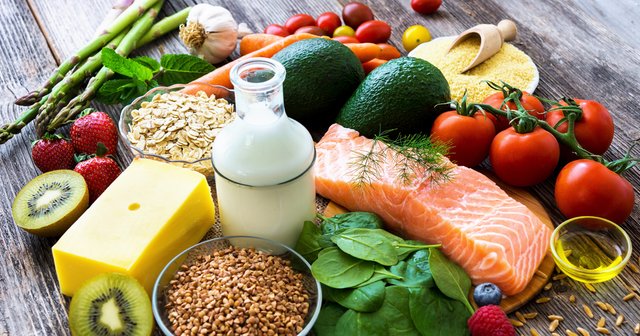The Ultimate Guide to the Best Healthy Foods

In today's fast-paced world, maintaining a healthy diet can be challenging, but it's essential for overall well-being. A balanced diet rich in nutrients can help prevent chronic diseases, boost energy levels, and improve mental health. This blog will explore some of the best healthy foods you can incorporate into your daily diet to enhance your health and vitality.
- Leafy Greens
Leafy green vegetables like spinach, kale, and Swiss chard are nutritional powerhouses. They are low in calories and high in vitamins A, C, and K, as well as minerals like iron and calcium. These greens are also rich in antioxidants that protect your cells from damage.
Benefits:
Improved Digestion: High fiber content aids in digestion.
Bone Health: High calcium and vitamin K levels support bone health.
Reduced Inflammation: Antioxidants help reduce inflammation in the body.
How to Eat:
Add them to salads, smoothies, or soups.
Sauté with garlic and olive oil as a side dish.
- Berries
Berries, such as blueberries, strawberries, and raspberries, are delicious and packed with nutrients. They are high in fiber, vitamins, and antioxidants, making them great for your heart and brain.
Benefits:
Heart Health: Berries can help reduce cholesterol levels and lower blood pressure.
Brain Function: Antioxidants in berries may delay brain aging and improve memory.
Weight Management: Low in calories and high in fiber, they keep you full longer.
How to Eat:
Add to yogurt or oatmeal for a nutritious breakfast.
Blend into smoothies or enjoy as a snack.
- Nuts and Seeds
Nuts and seeds, including almonds, walnuts, chia seeds, and flaxseeds, are excellent sources of healthy fats, protein, and fiber. They also provide essential vitamins and minerals, such as vitamin E, magnesium, and selenium.
Benefits:
Heart Health: Omega-3 fatty acids in nuts reduce the risk of heart disease.
Skin Health: Vitamin E and healthy fats promote healthy skin.
Satiety: High protein and fiber content help control appetite.
How to Eat:
Sprinkle on salads or yogurt.
Enjoy as a snack or mix into smoothies.
- Fatty Fish
Fatty fish like salmon, mackerel, and sardines are rich in omega-3 fatty acids, which are crucial for heart health. They are also an excellent source of high-quality protein and essential nutrients like vitamin D and selenium.
Benefits:
Heart Health: Omega-3s reduce inflammation and lower the risk of heart disease.
Brain Health: DHA, a type of omega-3, is vital for brain function.
Joint Health: Omega-3s can reduce symptoms of arthritis.
How to Eat:
Grill, bake, or steam and serve with vegetables.
Add to salads or pasta dishes.
- Whole Grains
Whole grains such as quinoa, brown rice, oats, and whole wheat are much healthier than their refined counterparts. They are high in fiber, B vitamins, and essential minerals like iron and magnesium.
Benefits:
Digestive Health: High fiber content promotes regular bowel movements.
Weight Management: Fiber helps you feel full longer.
Heart Health: Whole grains can reduce the risk of heart disease.
How to Eat:
Use as a base for salads or bowls.
Enjoy as a side dish or breakfast cereal.
- Legumes
Legumes, including beans, lentils, and chickpeas, are excellent plant-based protein sources. They are rich in fiber, iron, folate, and magnesium.
Benefits:
Heart Health: Lower cholesterol levels.
Blood Sugar Control: Low glycemic index helps manage blood sugar levels.
Digestive Health: High fiber content promotes a healthy gut.
How to Eat:
Add to soups, stews, and salads.
Use as a meat substitute in tacos or burgers.
- Avocado
Avocado is a unique fruit that is high in healthy fats, particularly monounsaturated fat, which is good for heart health. It also provides fiber, potassium, and vitamins C, E, and K.
Benefits:
Heart Health: Healthy fats lower bad cholesterol levels.
Nutrient Absorption: Helps absorb fat-soluble vitamins from other foods.
Skin Health: Antioxidants and healthy fats promote glowing skin.
How to Eat:
Spread on toast or use as a sandwich filling.
Add to salads, smoothies, or make guacamole.
- Sweet Potatoes
Sweet potatoes are a nutritious and versatile root vegetable. They are rich in fiber, vitamins A and C, and antioxidants.
Benefits:
Eye Health: High in beta-carotene, which converts to vitamin A.
Immune Support: Vitamins A and C boost the immune system.
Blood Sugar Control: Fiber and low glycemic index help regulate blood sugar.
How to Eat:
Roast or bake as a side dish.
Mash and use as a base for bowls or casseroles.
Conclusion
Incorporating these healthy foods into your diet can significantly improve your overall health and well-being. Remember to maintain a balanced diet, including a variety of foods from all food groups, to ensure you get a wide range of nutrients. Making small, sustainable changes to your eating habits can lead to long-term health benefits. Start by adding more leafy greens to your meals, snacking on berries, or replacing refined grains with whole grains. Your body will thank you for it!